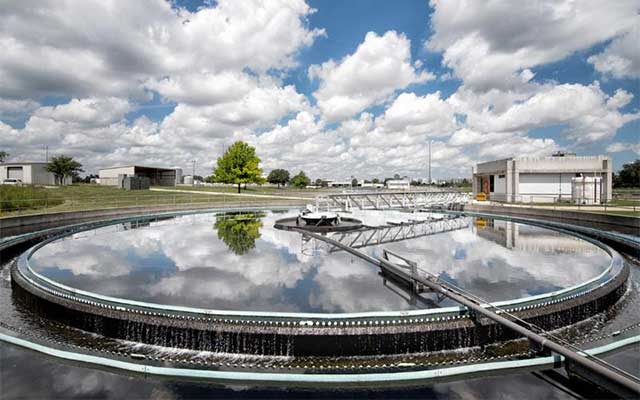The industrious water reclamation plants (WRP) that the Metropolitan Water Reclamation District of Greater Chicago (MWRD) enlists to clean the region’s wastewater are meeting compliance and receiving awards in the process. Despite unpredictable Chicago area weather and the unusual and not so delightful findings in sewage, the seven WRPs and the MWRD staff that monitors them continue working to improve area water quality while advancing a resource recovery model that protects the environment and reduces energy usage.
For these efforts, the MWRD was recognized by the National Association for Clean Water Agencies (NACWA) with awards for each WRP, including five Platinum Peak Performance Awards that have been given annually to the MWRD over two decades for the agency’s record in meeting compliance for water treatment.
“The Metropolitan Water Reclamation District of Greater Chicago is an outstanding example of environmental efforts. NACWA is honored to showcase the achievements of the Metropolitan Water Reclamation District of Greater Chicago and our nation’s public wastewater utilities through the Peak Performance Awards Program,” said NACWA Chief Executive Officer Adam Krantz.
The Calumet WRP received the platinum award for 24 years of 100 percent compliance; followed by the Lemont WRP for 19 years; James C. Kirie WRP in Des Plaines for 11 years; Terrence J. O’Brien in Skokie for 10 years; and Hanover Park WRP in the northwest suburb for eight years. The Egan WRP in Schaumburg and Stickney WRP in Stickney and Cicero also earned the gold award for the second straight year. Platinum Awards recognize 100 percent compliance with National Pollutant Discharge Elimination System (NPDES) permits over a consecutive five-year period. If 100 percent compliance is maintained beyond the initial award, Platinum Award status is continued. Should 100 percent compliance not be maintained, member agency facilities must receive four consecutive Gold Awards to again be eligible for another Platinum Award in their fifth year of compliance. All seven MWRD WRPs have earned 99.6 percent or higher compliance since 2007.
“Whatever challenges that have been thrown the way of our seven water reclamation plants, the Metropolitan Water Reclamation District of Greater Chicago (MWRD) has been prepared to handle,” said MWRD President Mariyana Spyropoulos. “We thank the National Association for Clean Water Agencies for the recognition and thank residents and businesses owners within the District that are cautious about what enters the sewers so as not to overwhelm the system.”
The Calumet WRP is the oldest of the seven WRP facilities, treating water from a 300 square mile area in Chicago and the south suburbs. The plant provides primary, secondary and tertiary treatment, thanks to its latest disinfection technologies.Calumet recently introduced a chlorination and de-chlorination process to disinfect its treated water that will reduce the amount of pathogenic bacteria in the water released from the plant into the Calumet River system.
Disinfection technologies neutralize or kill bacteria and microorganisms in treated water and reduce the risk of health problems resulting from direct contact with the water while recreating on a waterway. O’Brien WRP also unveiled a disinfection facility in 2016 that uses ultraviolet (UV) radiation to disinfect water as a final layer to its treatment process to reduce pathogenic bacteria in the water released into the North Shore Channel.
By using the two distinct technologies, the MWRD will have saturated the Chicago Area Waterway System (CAWS) with disinfected water entering the waterways from both the north and south ends of the CAWS, while protecting the region’s drinking water supply in Lake Michigan. In addition to directly benefiting the water environment, the disinfection projects created hundreds of jobs for tradespeople during construction.
Although treating water and improving the local water environment is a daily responsibility of the seven WRPs, other roles are emerging on a daily basis in resource recovery.
“The MWRD is working to become energy neutral by 2023 through the introduction of several WRP projects that will reduce greenhouse gases, promote a cleaner and more sustainable environment and provide a return on investment that benefits taxpayers,” said MWRD Commissioner Michael Alvarez.
The WRPs are implementing several innovations in renewable energy, while also recovering and developing reuse opportunities for water, biosolids, algae, phosphorus and other nutrients collected during the water treatment process. Each of the seven plants has made strides in helping the MWRD meet its goal of becoming a utility of the future in resource recovery. Through these opportunities, the MWRD will add value in traditional and non-traditional ways, while protecting the region’s water quality.
About the Metropolitan Water Reclamation District of Greater Chicago
Established in 1889, the MWRD (www.mwrd.org) is an award-winning, special purpose government agency responsible for wastewater treatment and stormwater management in Cook County, Illinois.





Comments